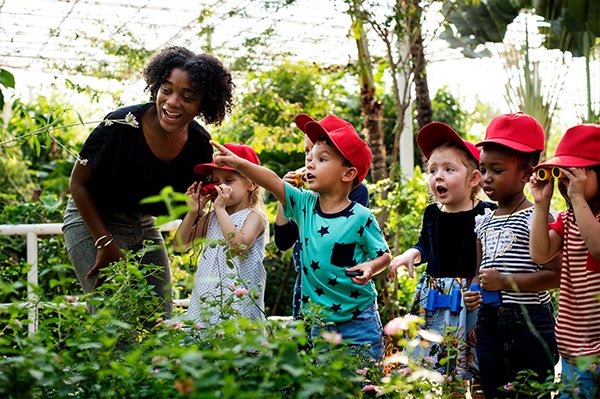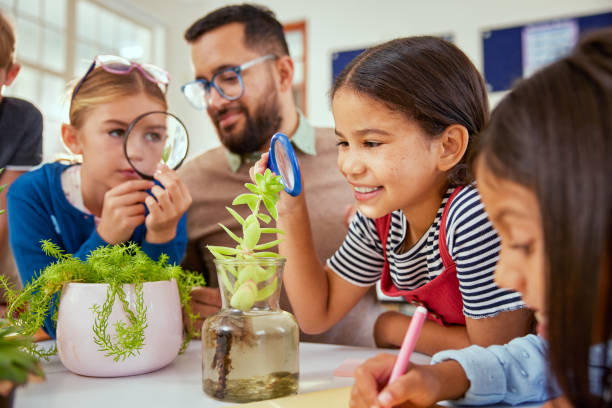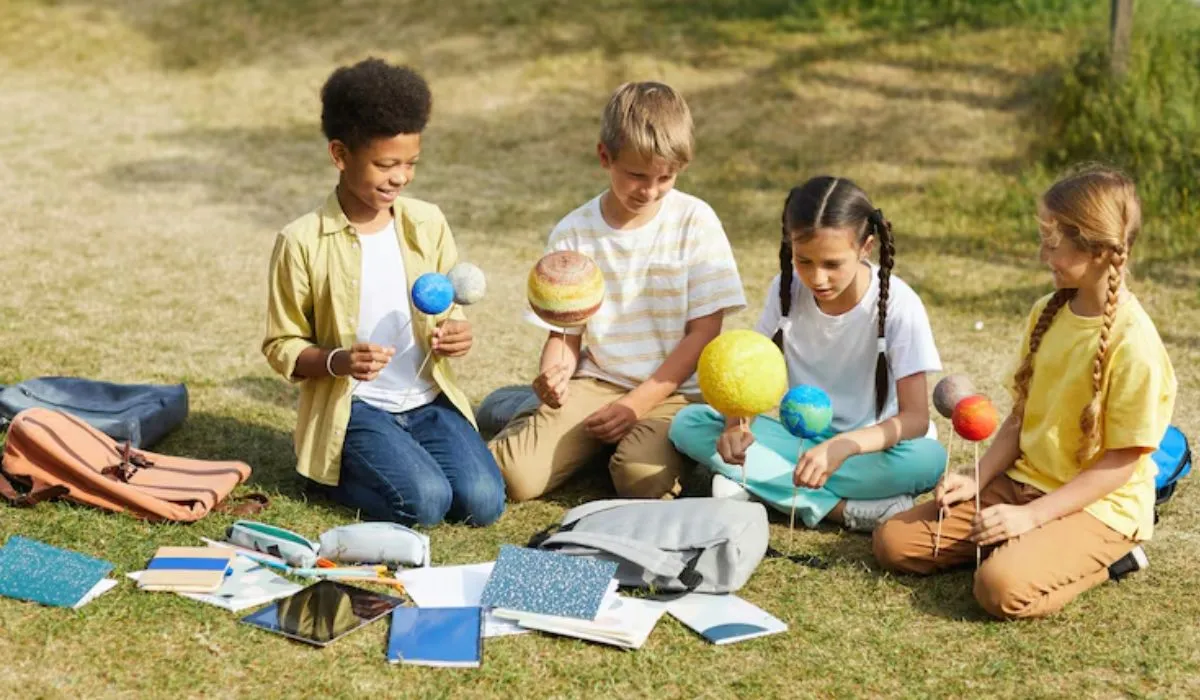Find outdoor learning games (integrating nature play and education) that children can find interesting. Find innovative concepts that will ensure learning is enjoyable and productive without necessarily being in a classroom.
When children study in the open the classroom is not enclosed by walls and their education is informed by the world around them. Outdoor education gives inexhaustible chances to make the main subjects more interesting and memorable. These nature activities that are very practical and hands-on enable children to move their bodies as they stretch their minds, which forms educational experiences that they can remember even when they go back home.
What Are Fun Outdoor Learning Activities for Kids?
Outdoor play-based learning games are experiential learning activities conducted in the outdoors, and the use of nature as a classroom and learning instruments. These are interactive nature activities that bring abstract concepts into the physical memorable experience. It could be solving math with rocks or reading under the trees, but these techniques make the methods of learning more interesting and efficient.
Literacy Adventures in Nature

Creative Writing in Outdoor Settings
Go outside and write and creativity will open up! Ask children to write about their time out in nature journals. They are able to write as an ant, explain the weather in their five senses or come up with similes relating to trees. Language arts are freshened and exciting as a result of outdoor writing activities.
Vocabulary Games With Natural Materials
Vocabulary review through sidewalk chalk makes language arts interesting. Design vocabulary tic-tac-toe or other word games at pavement. In the younger case of letter recognition, a water-play alphabet match using foam letters in a water container should be attempted. These learning outdoor activities also make it enjoyable to practice words.
Reading Outside in Nature
And never, of course, underrate the effectiveness of a change of scene to read in. Go outside with books and allow children to find cozy places to read books alone or to have a read-aloud. The outdoor reading sessions can change the attitude of a child towards books and form positive reading associations.
You may also read :- 7 Fun & Simple Outdoor Activities for Kids
Math Exploration Outdoors
Nature Measurements and Geometry
The field is unlimited in terms of practice in math. Children may discover the perimeter and the area of garden beds, the length of the shadows, or the circumference of various trees. The geometry scavenger hunt allows them to discover 2D and 3D geometry, parallel lines, and nature symmetry.
Active Math Games and Races
Join math practice and exercises together by doing math relay races where students will solve problems in various stations. Math hopscotch in different skills such as even/odd numbers, fractions, or facts about multiplication is also an interesting alternative. These game activities allow children to use their energy and sustain the concepts of math.
Equations Using Natural Objects
Skip the use of numbers and use rocks, sticks, nuts, and other outdoor objects to formulate equations. This hands-on method of math also enables the visual and kinesthetic learners to understand abstract concepts with a lot of ease. Even basic exercises such as counting leaves, sorting natural objects according to a number of different qualities form powerful mathematical bases.
Science and Nature Investigation

Outdoor Science Experiments
Basic science experiments outside facilitate the materialization of concepts. Experiment with the absorption of heat by various surfaces, design sundials or erosion near school grounds. Weather observation activities show children to note down temperature, types of clouds and direction of the wind and make comparisons of the observed changes over time.
Nature Observation and Exploration
A scavenger hunt in a natural setting promotes close observation skills because children go out to find particular objects of nature. Binoculars and field guides used in bird watching are educative in terms of identification and patience. Constructing a bug hotel ensures more insects have protection and also gives constant possibilities to observe.
Teaching Activities on the Environment
Gardening imparts in children the process of growth of plants and accountability. A classroom compost project allows students to weigh the food waste and graph the results and learn about decomposition. Such environmental education programs promote stewardship and bridge the gap between learning and practice.
Physical Learning Activities
Obstacle Courses and Active Games
Create a nature obstacle course with such natural obstacles as logs to jump over, running areas between, and balance obstacles. Animal poses are practiced in nature yoga, which relates to nature. These interactive learning exercises build coordination and give a workout.
Camouflage and Adaptation Games
The camouflage caterpillars exercise educates the protective modifications in nature. Colored wool, or pipe cleaner, caterpillars are hunted by children put around the outdoor area, and it is found which are most readily found in varying environments. This illustrates natural selection in an actual sense.
Frequently Asked Questions
What are the advantages of outdoor learning?
The outdoor learning offers many advantages such as better concentration, fewer stress, more physical activity, greater creativity, and information retention. It assists children in connecting with nature and transfers the academic ideas into the real life.
What about outdoor learning when it is different weather?
Outdoor education is achievable under different types of weather provided it is well prepared. Erosion or water cycle in study. Make sun art or track shadows when it is sunny. Snow allows such activities as construction of shelters or researching insulation. Always make sure that children are well dressed according to the conditions.
But what about lacking access to a natural space?
Outdoor learning in the city may take place anywhere - school playgrounds, black tops or even small courtyards. Outdoor learning activities such as chalk math, measuring activities on playground playthings, or observation of urban wildlife, such as birds and insects, do not require access to a wilderness.
What do I need to do to justify outdoor learning time with administrators?
Present outdoor education as an addition and not substitution of core teaching. Demonstrate how it can support the various learning styles, give hands-on experiences with the academic concepts, and promote the physical and mental well-being, which ultimately enhances academic performance and classroom behavior.




